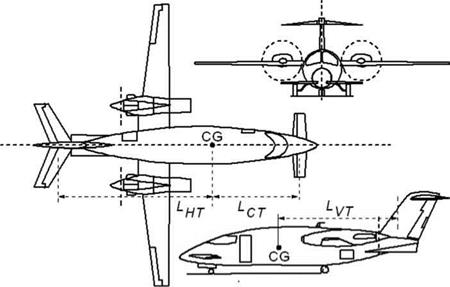V-Tail Volume Coefficient, Cvt
From the yawing-moment equation (see Chapter 12) for steady-state (i. e., equilibrium) level flight, the V-tail volume coefficient is given as the V-tail plane reference area:
|
Figure 3.48. Three-surface canard configuration (Piaggio P180 Avanti) |
where CVT is the V-tail volume coefficient, 0.05< CVT <0.1; a good value is 0.07. LVT is the H-tail arm = distance between the aircraft CG to the ac of MACVT. In general, the area ratio SVT/SW ^ 0.15 to 0.25.
Chapter 6 describes how to estimate the empennage areas; a number of design iterations are necessary. Figures 12.15 and 12.16 give statistical values of tail volume coefficients.














